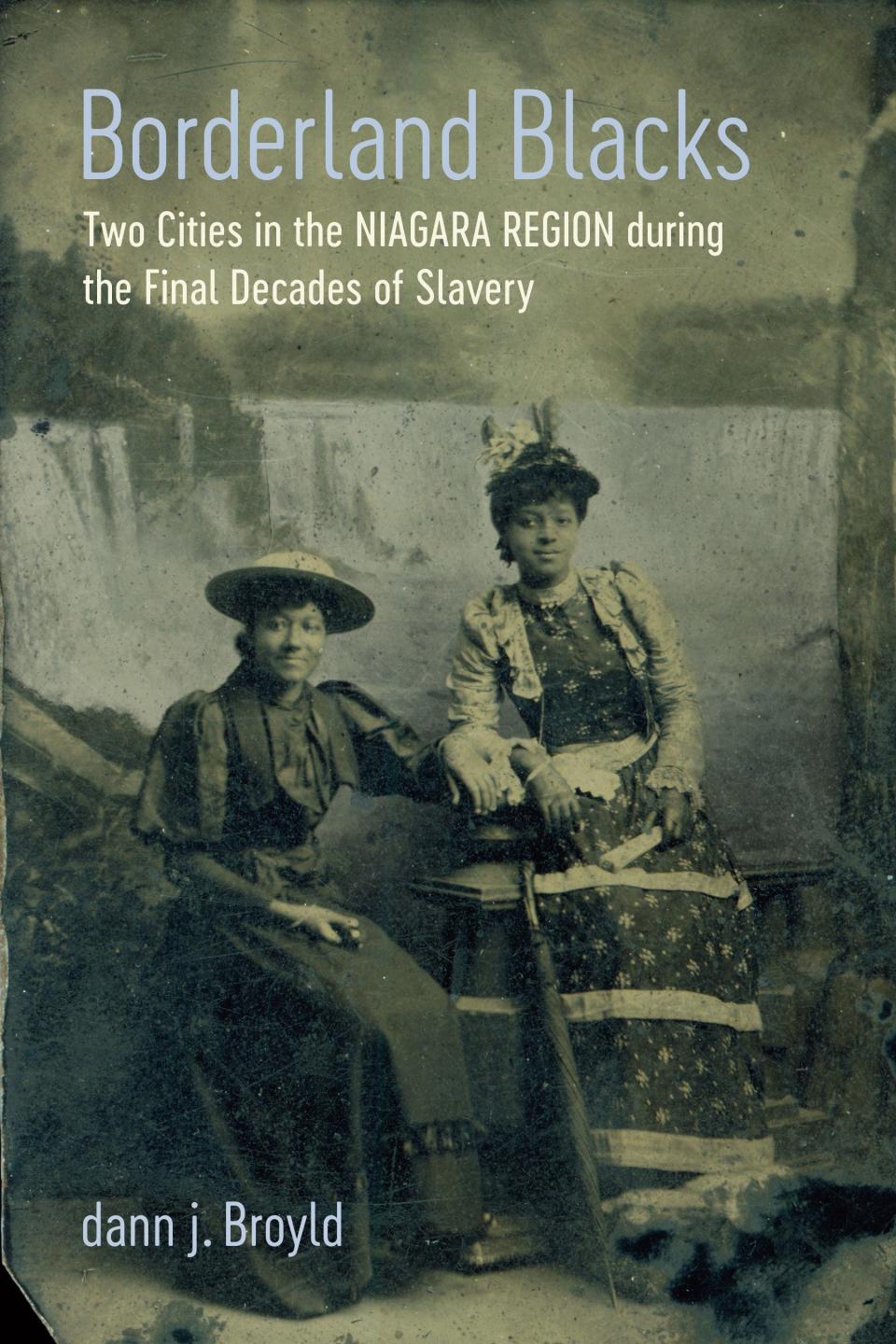Historian to discuss powerful border dynamics for Black community in 19th century Rochester
- Oops!Something went wrong.Please try again later.
The things that Frederick Douglass and other Black residents of 19th century Rochester deemed lacking in the Fourth of July, they found instead in a lesser-known commemoration: August First.
The date in 1834 brought the abolition of slavery in the British empire, including in Canada. For several decades afterward, Black residents in Rochester and other western New York communities held their own celebrations to mark the date and attended ones in Canada, in particular in the small city of St. Catharine's, near Niagara Falls.
Those August First celebrations were a striking example of the powerful and dynamic cross-border ties among Black communities in the Niagara region, which are highlighted by historian dann j. Broyld in his book "Borderland Blacks."
"Blacks, particularly in the Niagara district, led lives of uncertainty and flux that prompted movement and migration," he wrote. "In spaces like Western New York, they knew that proximity and access to the American-Canadian border gave them ways to negotiate change, to communicate with like-minded people, and to share resources and ideas."
Broyld, a Rochester native and professor of African American history at the University of Massachusetts Lowell, will be at the Kodak Center, 200 W. Ridge Road, in Rochester at 6 p.m. Thursday, Aug. 10, for an event sponsored by the Lower Falls Foundation.
Optional donations will go to the Lower Falls Foundation, a nonprofit that aims to help revitalize the neighborhoods around Rochester's Lower Falls.

Why the Niagara region became a hub for America's abolitionist movement
Broyld focuses his book on Rochester and St. Catharine's, arguing that their close geography and shared status as centers of abolitionism and Black activism made for a unique relationship.
"To Black people in particular, what made Rochester dynamic is its proximity to British Canada," Broyld said in an interview. "My goal with the book was to shift the thinking about Rochester from local and regional history to transnational and international history."
All of the significant Black leaders and abolitionists who spent time in the Niagara region — Douglass, Harriet Tubman, Austin Steward, Jermaine Loguen, John Brown — moved freely across the border as circumstances dictated. Many of the Underground Railroad travelers who boarded boats on the Genesee River were bound for St. Catharine's.
Samuel Ringgold Ward, a speaker at some of the historic August First gatherings, wrote that celebrants "wrought and rejoiced on one side of the line; we did the same on the other side of the line. ... We were yokefellows, why should we not recognize each other as such?"

The ebb and flow of people between the two cities was, of course, strongly affected by developments in the American fight against slavery. After the passage of the Fugitive Slave Law in 1850, many Black Rochesterians found it safer to relocate to Canada, while others worked to thwart Southern bounty-seekers and kidnappers.
During the period when slavery was abolished in Canada but remained legal in the United States, the legal advantages of moving to a city like St. Catharine's were clear. But Broyld writes how social dynamics with white leadership in the two cities were distressingly similar.
"Although Canada offered Blacks greater legal rights, the belief in Black innate inferiority was a transcending sentiment in the Niagara region," he wrote. "Blacks arriving in Canada soon found that legal privileges did not feed, clothe or employ them."
After the Emancipation Proclamation, many Black emigrants left St. Catharine's either to resettle in Rochester or, more specifically, to enlist in the Union Army. The unique nature of the relationship dissolved after the end of the war, though there were later fruitful exchanges including W.E.B. Du Bois's Niagara Movement.
How dann J. Broyld, a Rochester native, sees borders
Broyld was born in Rochester's 19th Ward but moved when he was young to Chili — the city line acting as another active and significant border, he noted, in particular for families with school-age children. He got a master's degree in history at SUNY Brockport before receiving his doctorate degree from Howard University.
The most durable truth about political borders, Broyld said, is that they're human-made and subject to redefinition based on laws and other circumstances. In 2023 the Canadian border has less significance for Black people but enormous significance for refugees now being denied entry at the Roxham Road border crossing, for example.
"Borders are really artificial; they're there for power-holders to retain power over particular areas," he said. "But what ordinary people do is mess borders up. ... We in the borderlands have an opportunity to do something that others cannot do."
Contact staff writer Justin Murphy at jmurphy7@gannett.com.
This article originally appeared on Rochester Democrat and Chronicle: Historian dann Broyld to make presentation at Rochester's Kodak Center

